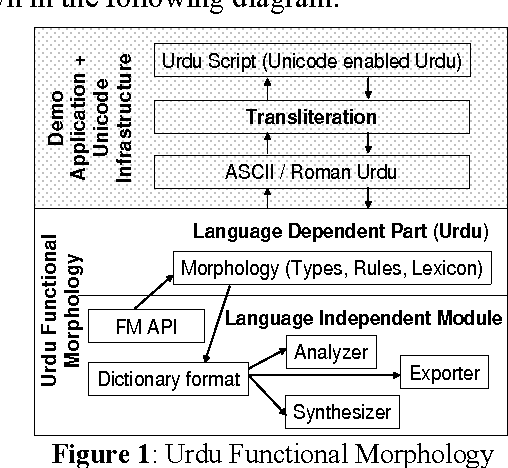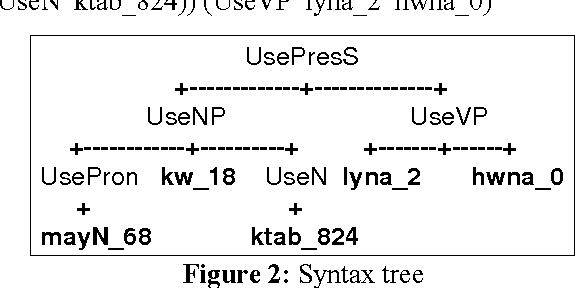Aarne Ranta
Urdu Morphology, Orthography and Lexicon Extraction
Apr 06, 2022



Abstract:Urdu is a challenging language because of, first, its Perso-Arabic script and second, its morphological system having inherent grammatical forms and vocabulary of Arabic, Persian and the native languages of South Asia. This paper describes an implementation of the Urdu language as a software API, and we deal with orthography, morphology and the extraction of the lexicon. The morphology is implemented in a toolkit called Functional Morphology (Forsberg & Ranta, 2004), which is based on the idea of dealing grammars as software libraries. Therefore this implementation could be reused in applications such as intelligent search of keywords, language training and infrastructure for syntax. We also present an implementation of a small part of Urdu syntax to demonstrate this reusability.
Embedded Controlled Languages
Jun 16, 2014
Abstract:Inspired by embedded programming languages, an embedded CNL (controlled natural language) is a proper fragment of an entire natural language (its host language), but it has a parser that recognizes the entire host language. This makes it possible to process out-of-CNL input and give useful feedback to users, instead of just reporting syntax errors. This extended abstract explains the main concepts of embedded CNL implementation in GF (Grammatical Framework), with examples from machine translation and some other ongoing work.
 Add to Chrome
Add to Chrome Add to Firefox
Add to Firefox Add to Edge
Add to Edge